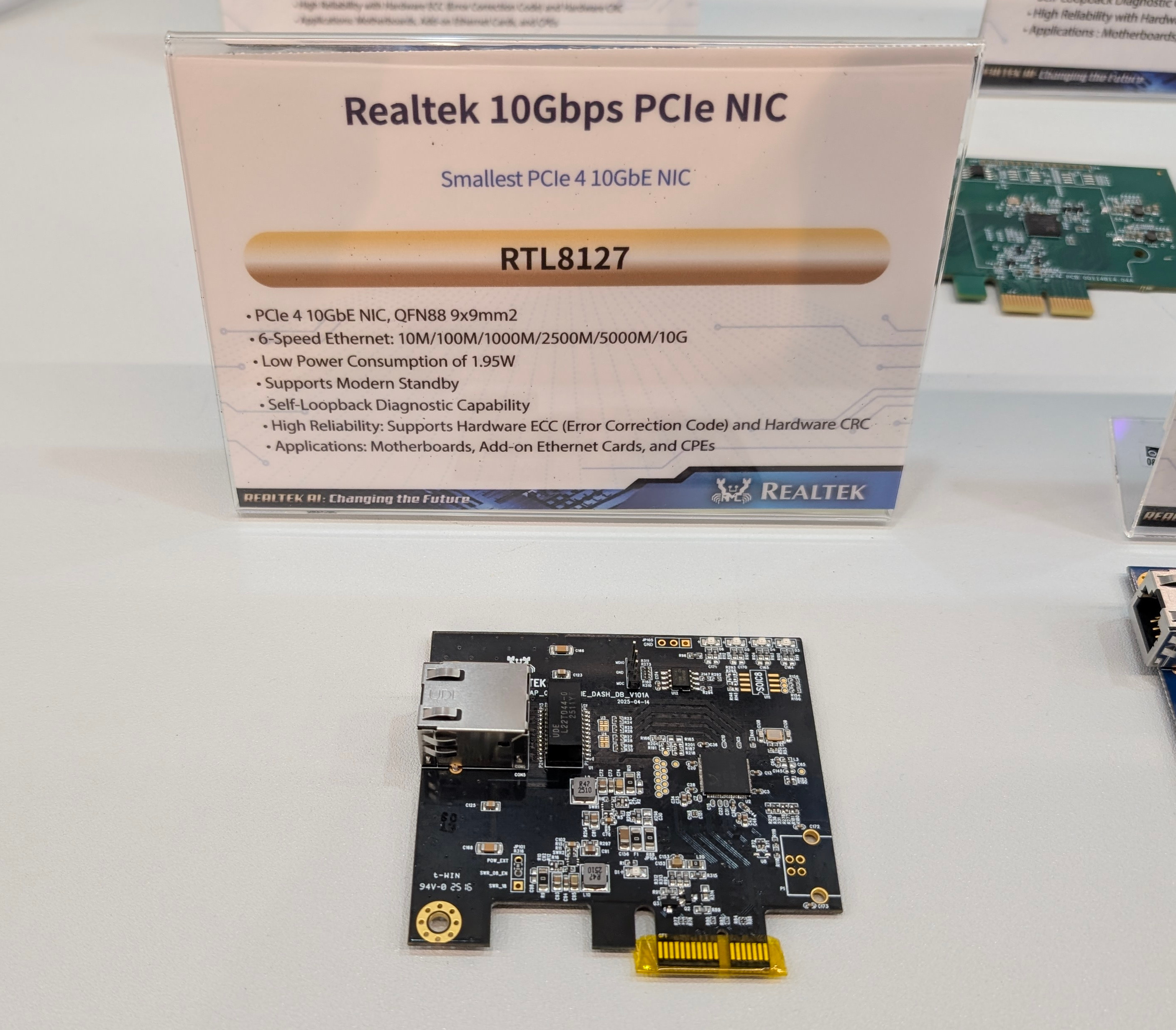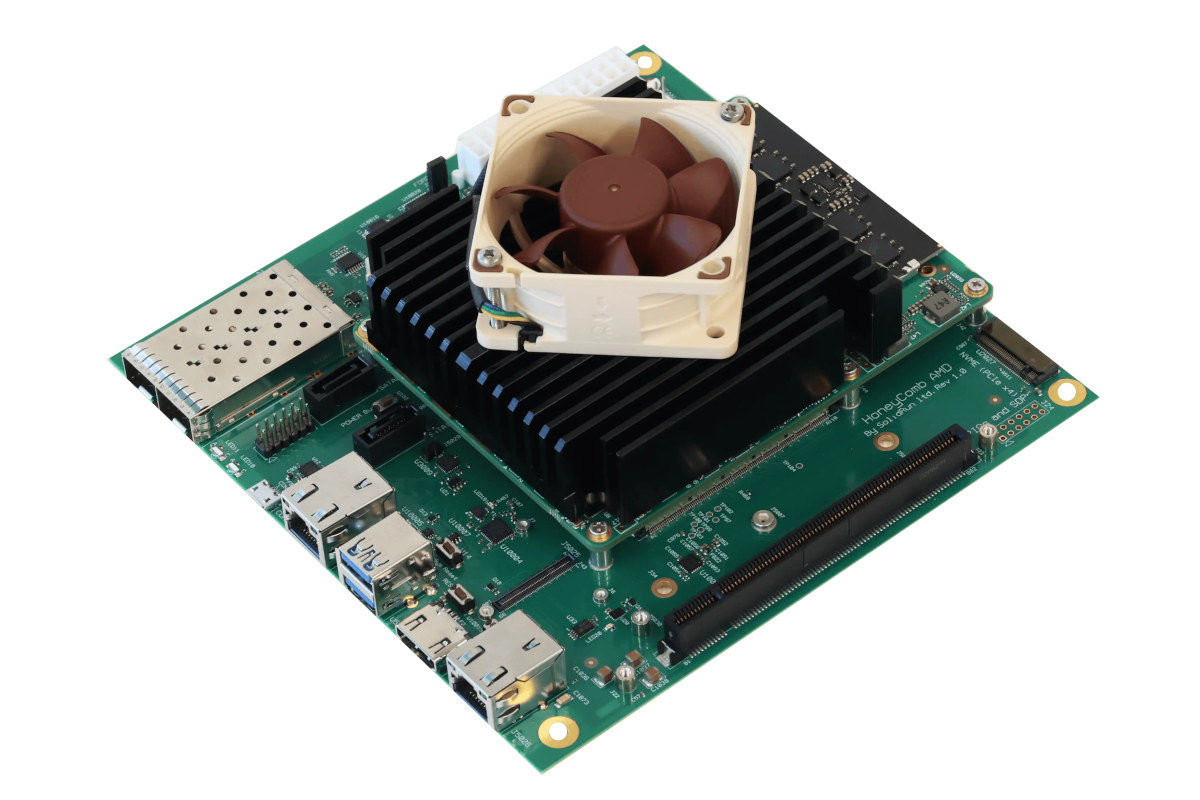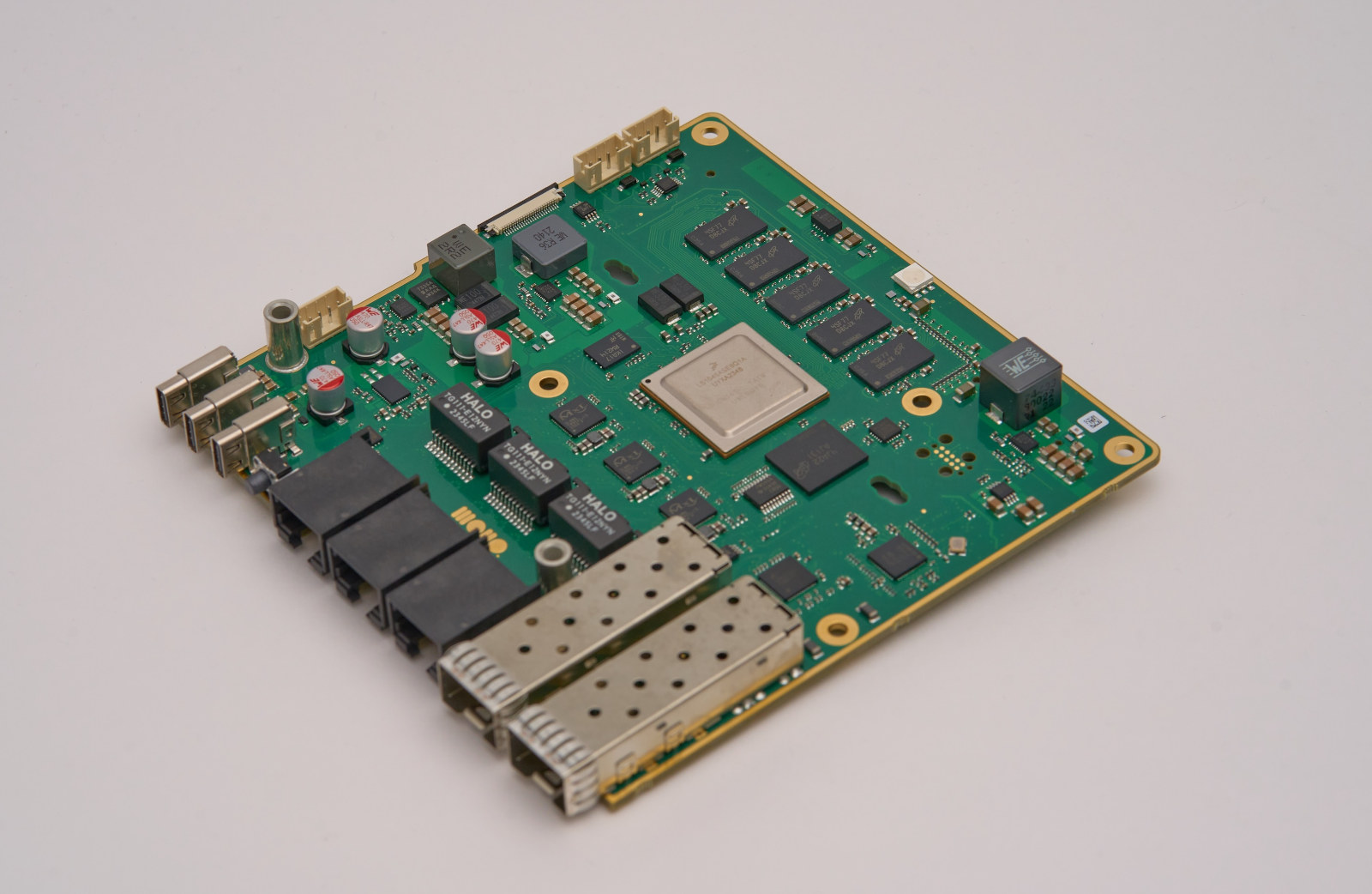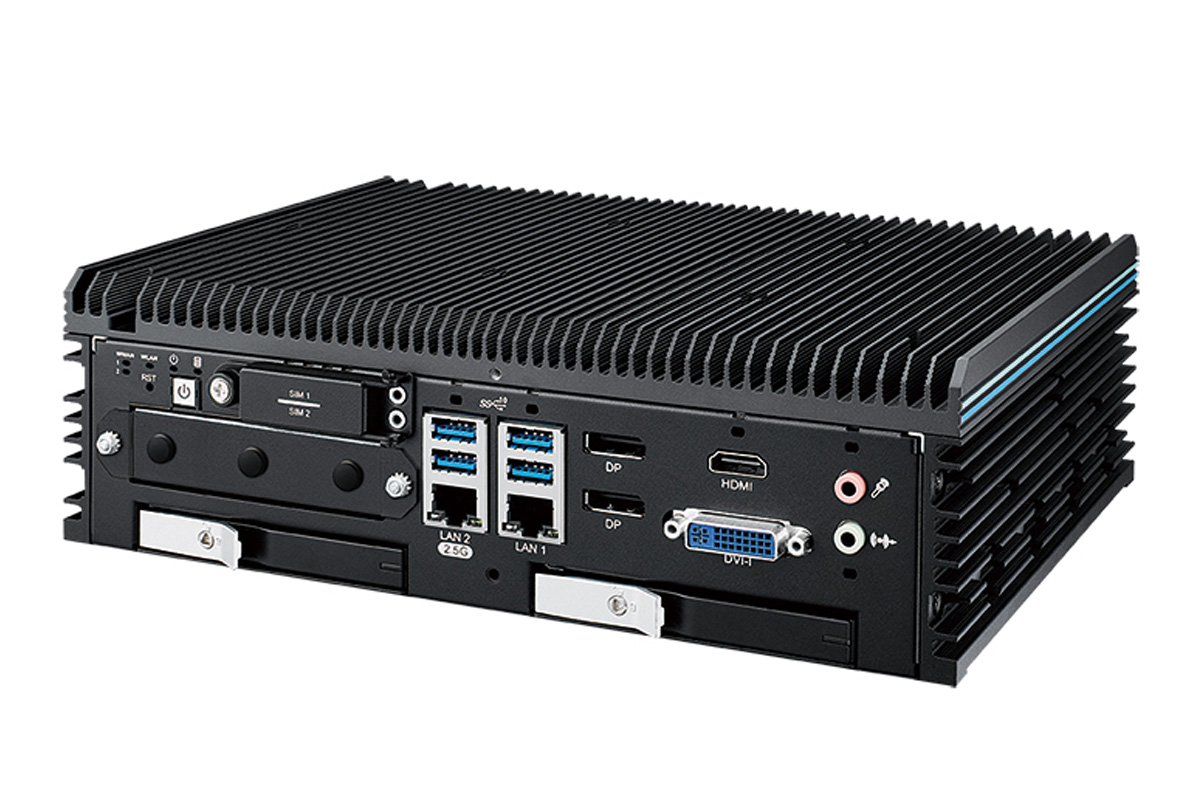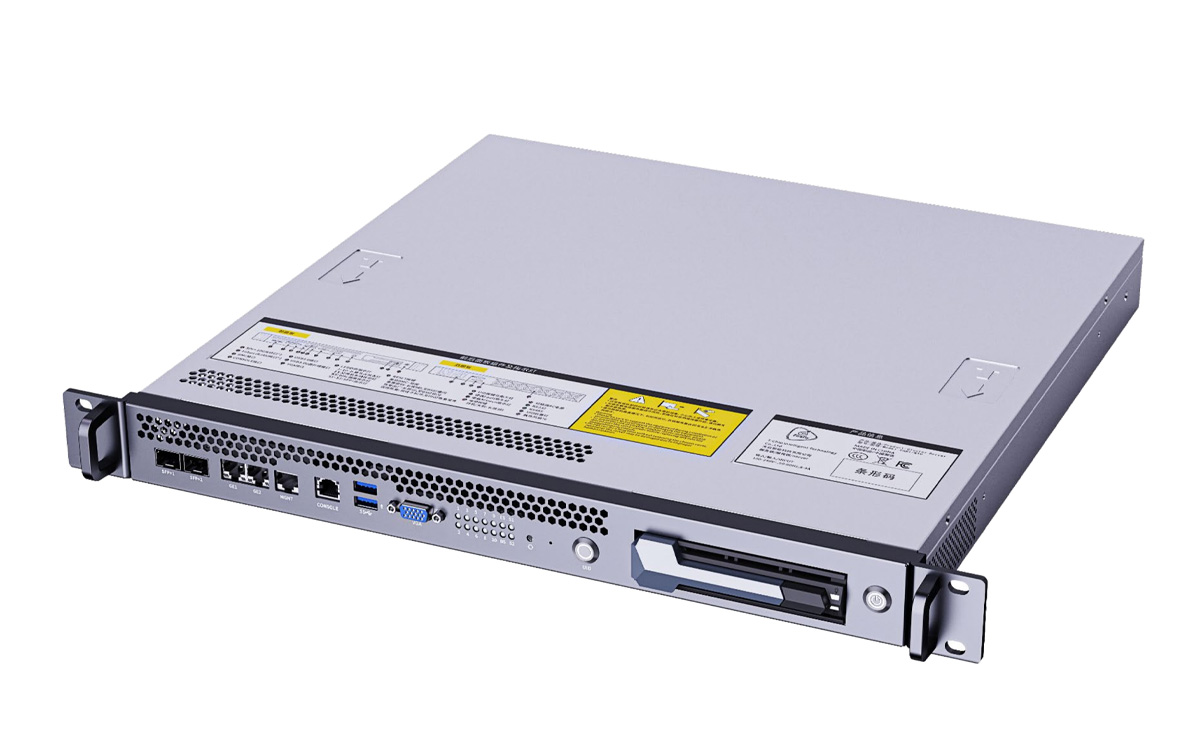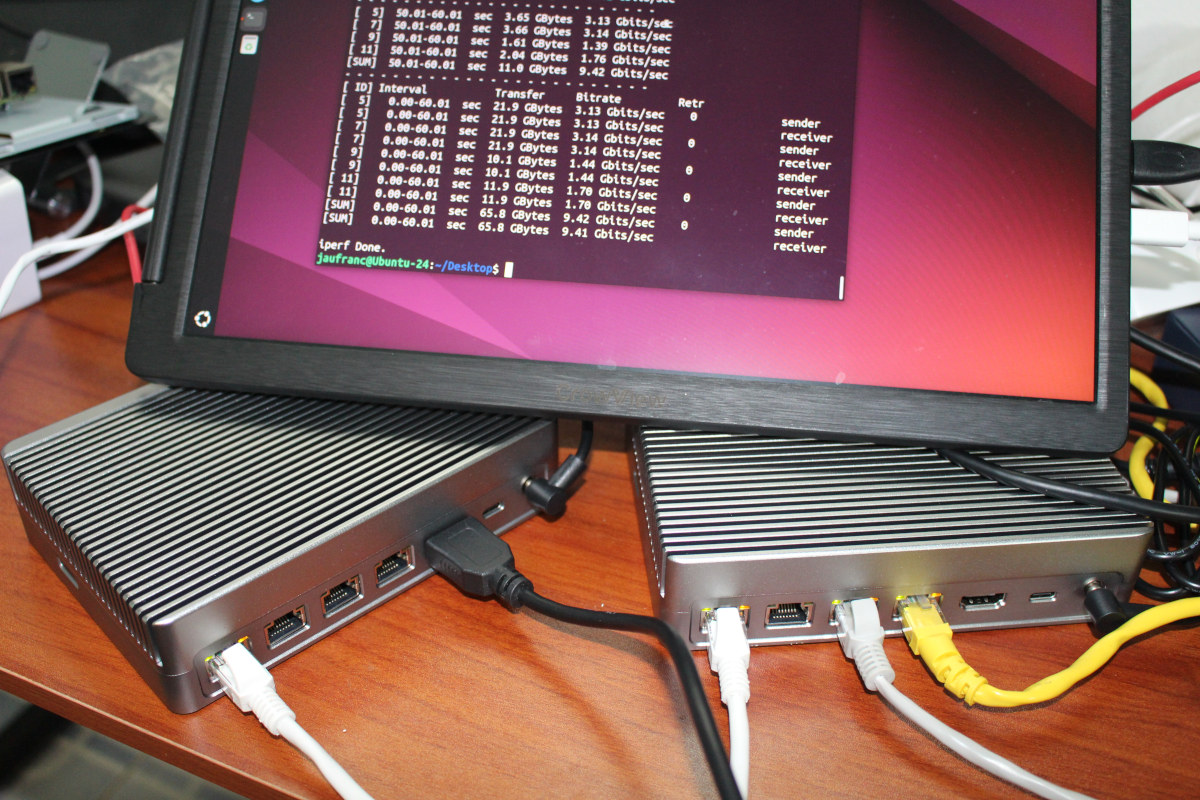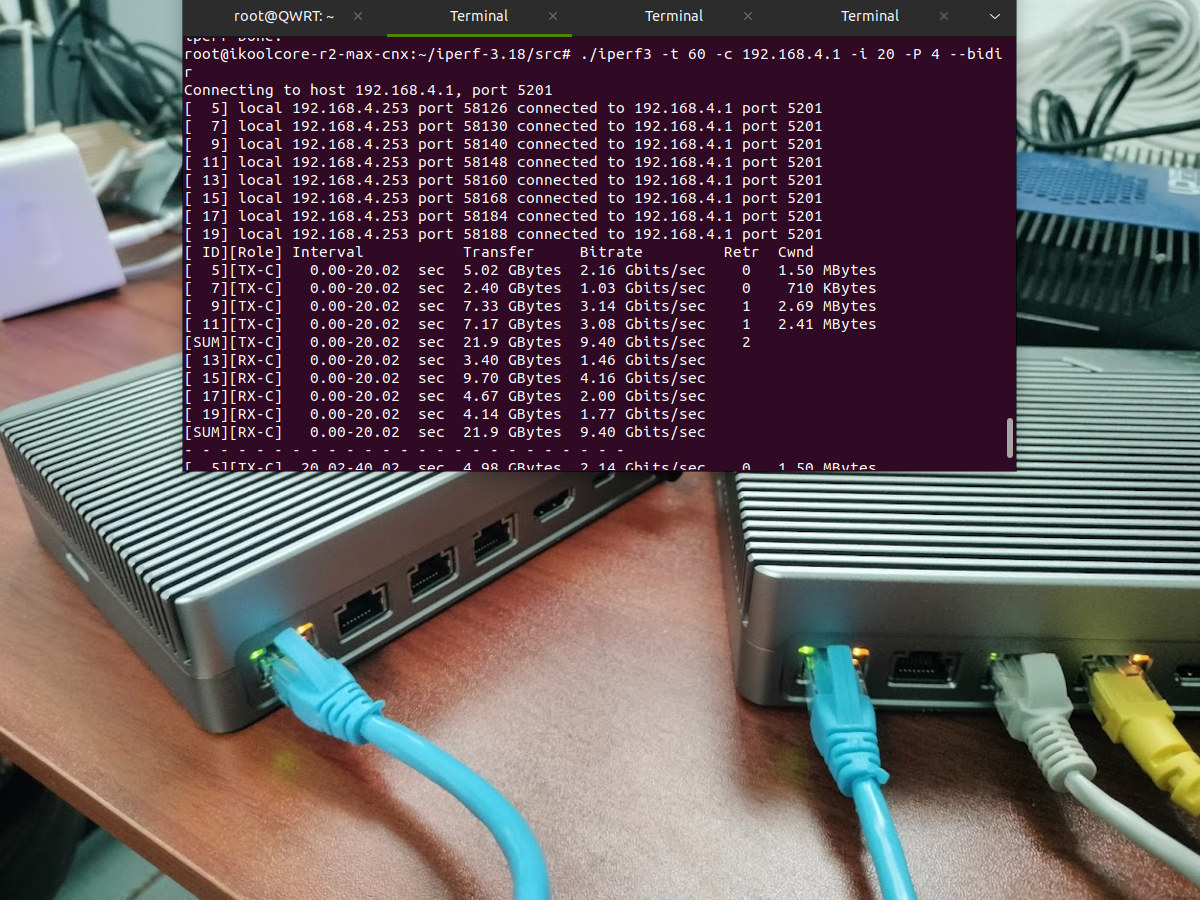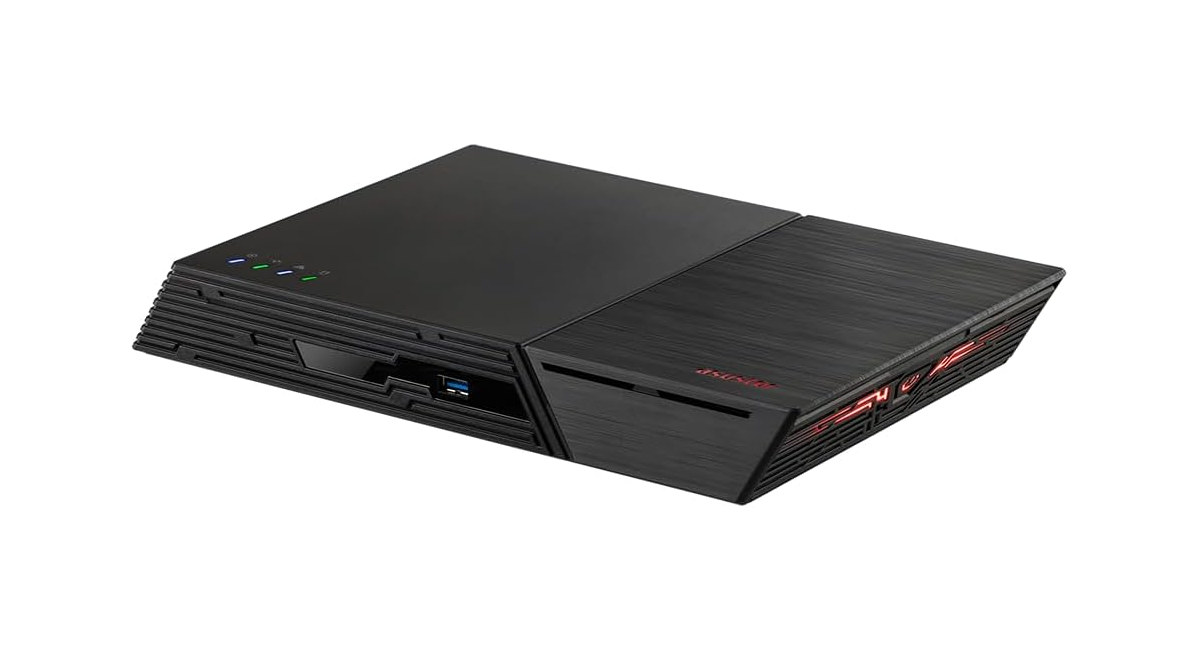Realtek showcased RTL8126, RTL8157, and RTL8251B 5 Gbps Ethernet solutions at Computex 2023, and the first Realtek RTL8126 5 Gbps Ethernet PCIe and M.2 adapters were introduced in 2024, shortly followed by RTL8157 5GbE USB 3.2 adapters. The company has now unveiled upgraded solutions for 10 Gbps Ethernet networking at Computex 2025 with the RTL8127 10GbE PCIe controller and variants, the RTL8159 10GbE USB 3.2 Gen 2×2 controller, and the RTL8261C PHY for 10GbE switches. Realtek RTL8127 10GbE PCIe NIC Realtek RTL8127 specifications: Ethernet – 10Mps, 100Mps, 1000Mps, 2500Mps, 5000Mps, and 10Gbps Host interface – PCIe Gen4 Features Modern standby Self loopback diagnostic Hardware ECC and CRC Power consumption – 1.95 Watts Package – 9×9 mm QFN88 The Realtek RTL8127 will be found in PCIe and M.2 cards, or directly soldered on motherboards or CPEs. The good news is the low power consumption, which should make cooling easier and cheaper […]
HoneyComb Ryzen V3000 – An AMD Ryzen V3C18I mini-ITX motherboard with dual 10Gbps SFP+, 2.5GbE, dual SATA III
SolidRun HoneyComb Ryzen V3000 is a mini-ITX motherboard powered by an AMD Ryzen Embedded V3C18I processor, supporting up to 64GB of DDR5 memory and M.2 PCIe NVMe SSD storage, and equipped with two 10 Gbps Ethernet SFP+ cages, a 2.5GbE RJ45 jack, and two SATA III ports for advanced networking and storage applications. The solution is comprised of a mini-ITX motherboard and a Ryzen V3000 CX7 COM Express module, which the company introduced in 2022. As an industrial motherboard, it’s designed to operate in the -40°C to +85°C temperature range. HoneyComb Ryzen V3000 specifications: Ryzen V3000 CX7 COM Express module SoC – AMD Ryzen Embedded V3C18I octa-core/16-thread processor clocked at 1.9 GHz / 3.8 GHz (Turbo) with 4 MB L2 cache and 16 MB L3 cache; TDP: 15W System Memory – Up to 64GB (2x 32GB), ECC/Non-ECC DDR5 memory up to 4800 MT/s via two SODIMM sockets. Dimensions – 125 […]
Mono Gateway – A 10GbE nano-ITX router board powered by NXP Layerscape LS1046A
The Mono Gateway is a nano-ITX router board powered by an NXP LayerScape LS1046A quad-core processor and equipped with two 10GbE SFP+ cages, three gigabit Ethernet RJ45 ports, and M.2 sockets for wireless WiFi 6 and/or tri-band WiFi 5, Bluetooth, and Thread modules. Tomaž Zaman’s YouTube channel description reads “I hate routers”, and that’s exactly why the “Gateway” came to life. He wanted a router that meets his expectations and runs open-source software. The NXP Layerscape LS1046A was selected thanks to its ability to support 10 Gbps Ethernet with up to 26 Gbps line-rate throughput for VLANs, PPPoE, and NAT. Let’s have a look. Mono Gateway specifications: SoC – NXP Layerscape LS1046A quad-core Cortex-A72 processor @ 1.6 GHz System Memory – 8 GB ECC RAM @ 2100 MT/s Storage 32 GB eMMC flash for the OS 64 MB NOR flash for the bootloader Networking 2x SFP+ 10 Gbps Ethernet cages […]
Vecow ECX-4000 – Intel Core Ultra 200S-powered fanless Edge AI embedded system features up to 9 Ethernet ports
Taiwan-based company Vecow has recently launched the ECX-4000 series, an Intel Core Ultra 200S-powered fanless Edge AI embedded system with up to nine Ethernet ports including two 10G SFP+ cages, five 2.5GbE ports (with 4 supporting PoE+), and a gigabit Ethernet jack, SUMIT (Stackable Unified Module Interconnect Technology) expansion, and a 9V to 50V DC redundant power input. The ECX-4000 supports the whole line of Intel Core Ultra 200S Series of Processors (Arrow Lake). It comes with W880 PCH which gives access to various I/O options including USB 3.2 Gen 2 ports, RS-232/422/485 serial ports, sixteen isolated digital I/O (8x input, 8x output, optional), DisplayPort, HDMI, and DVI-I video outputs. Additionally, it offers M.2 Key B and Key E sockets for wireless modules, and expansion options including multiple storage interfaces such as SATA III ports and an M.2 Key-M socket. The system also features a range of power and remote […]
Firefly’s CSB1-N10 series AI cluster servers can deliver up to 1000 TOPS of AI power with Rockchip or NVIDIA Jetson Modules
Firefly has recently introduced the CSB1-N10 series AI cluster servers designed for applications such as natural language processing, robotics, and image generation. These 1U rack-mounted servers are ideal for data centers, private servers, and edge deployments. The servers have multiple computing nodes, featuring either energy-efficient processors (Rockchip RK3588, RK3576, or SOPHON BM1688) or high-performance NVIDIA Jetson modules (Orin Nano, Orin NX). With 60 to 1000 TOPS AI power, the CSB1-N10 servers can handle the demands of large AI models, including language models like Gemma-2B and Llama3, as well as visual models like EfficientVIT and Stable Diffusion. CSB1-N10 series specifications All CSB1-N10 AI servers have the same interfaces, and the only differences are the CPU, memory, storage, multimedia, AI capabilities, and related software support. So it’s likely Firefly has made Rockchip system-on-modules compatible with NVIDIA Jetson SO-DIMM form factor, and indeed we previously noted that Firefly designed Core-1688JD4, Core-3576JD4, or Core-3588JD4 […]
iKOOLCORE R2 Max review – Part 2: 10GbE on an Intel N100 mini PC with OpenWrt (QWRT), Proxmox VE, Ubuntu 24.04 and pfSense 2.7.2
I’ve already checked out iKOOLCORE R2 Max hardware in the first part of the review with an unboxing and a teardown of the Intel N100 system with two 10GbE ports and two 2.5GbE ports. I’ve now had more time to test it with an OpenWrt fork, Proxmox VE, Ubuntu 24.04, and pfSense, so I’ll report my experience in the second and final part of the review. As a reminder, since I didn’t have any 10GbE gear so far, iKOOLCORE sent me two R2 Max devices, a fanless model and an actively-cooled model. I was told the fanless one was based on Intel N100 SoC, and the actively-cooled one was powered by an Intel Core i3-N305 CPU, but I ended up with two Intel N100 devices. The fanless model will be an OpenWrt 23.05 (QWRT) server, and the actively cooled variant be the device under test/client with Proxmox VE 8.3 server […]
How to use iperf3 in multi-thread mode for 10Gps+ Ethernet testing
With 10GbE becoming more widespread and often found in entry-level hardware, the CPU may become the bottleneck, so I’ll explain how to use iperf3 in multi-thread mode to fully saturate the 10GbE bandwidth even with a system based on a relatively low-end multi-core processor.
For this tutorial, I use two iKOOCORE R2 Max mini PCs with two 10GbE interfaces each and an Intel N100 quad-core processor running an OpenWrt fork (QWRT) and Proxmox VE (Debian) respectively. I will show how I can fully saturate the 10GbE interfaces using multithreading, but not with a typical iperf3 single-core test.
ASUSTOR Flashstor Gen2 NAS features AMD Ryzen Embedded V3C14, 10GbE networking, up to 12x NVMe SSD sockets
ASUSTOR Flashstor 6 Gen2 and Flashtor 6 Pro Gen2 are NAS systems based on AMD Ryzen Embedded V3C14 quad-core processor with up to two 10GbE RJ45 ports and taking up to 6 or 12 M.2 NVMe SSDs respectively. The Flashstor Gen2 models are updated to the ASUSTOR Flashtor NAS launched last year with similar specifications including 10GbE and up to 12 M.2 SSDs, but based on a relatively low-end Intel Celeron N5105 quad-core Jasper Lake processor. The new Gen2 NAS family features a more powerful AMD Ryzen Embedded V3C14 SoC, support for up to 64GB RAM with ECC, and USB4 ports. The downside is that it lacks video output, so it can’t be used for 4K/8K video consumption like its predecessor. Flashstor Gen2 NAS specifications: SoC – AMD Ryzen Embedded V3C14 quad-core/8-thread processor @ 2.3/3.8GHz; TDP: 15W System Memory Flashstor 6 Gen2 (FS6806X) – 8 GB DDR5-4800 Flashstor 12 Pro […]


